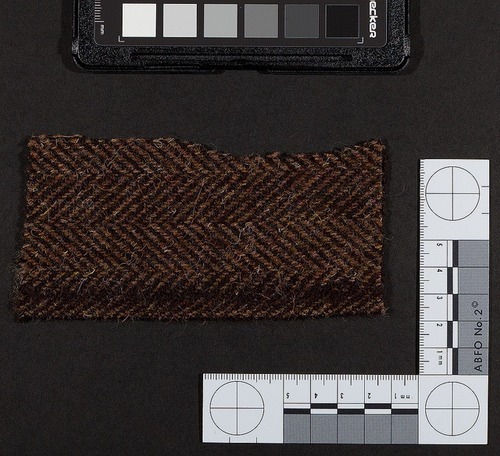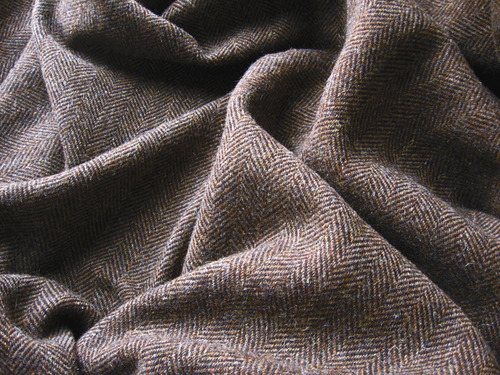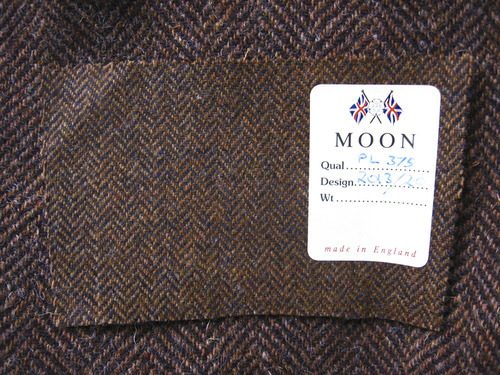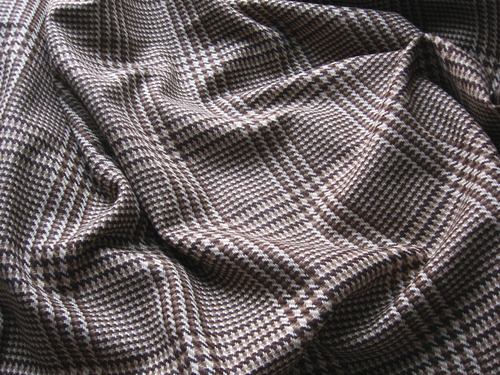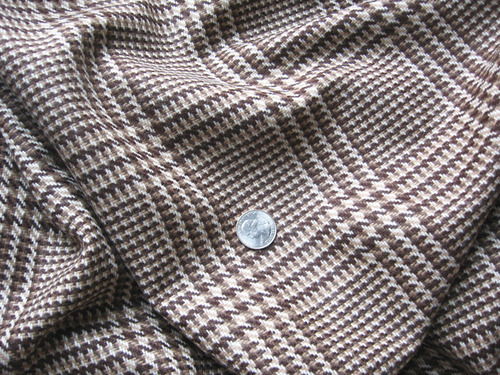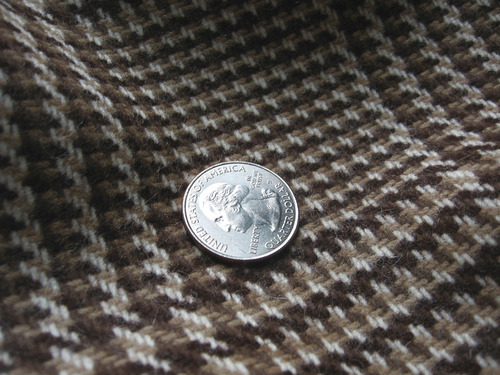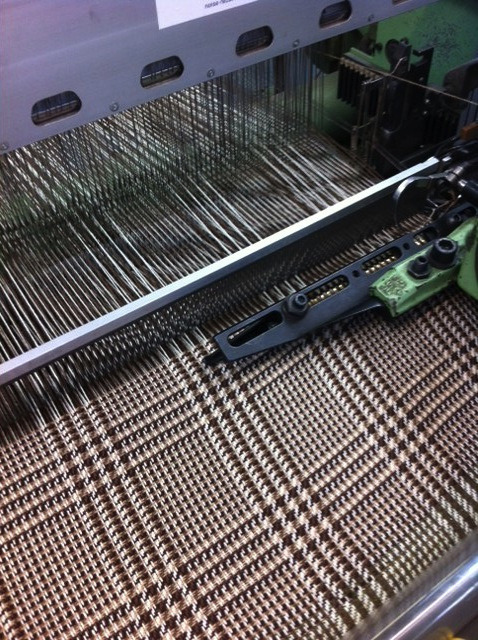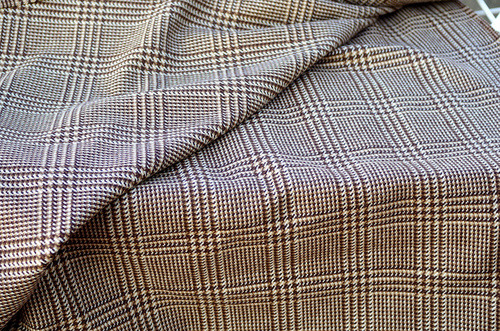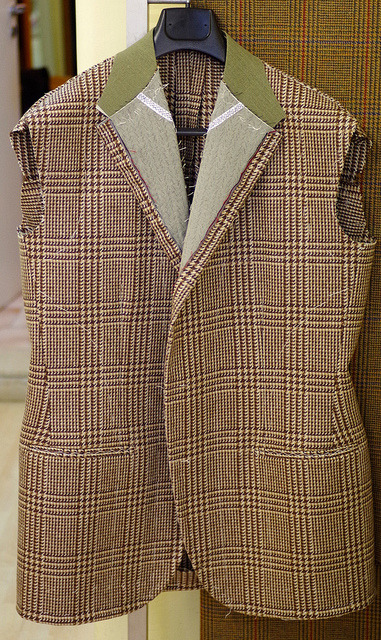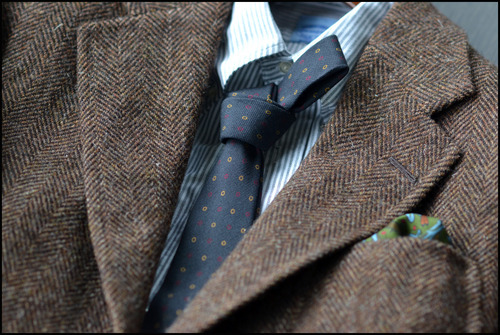
I recently received two new London Lounge fabrics, which is great timing because Steed will be touring the US next month. Included in the shipment was a brown Shetland herringbone, with qualities that I’ve found impossible to get elsewhere. Spongy and light in the hand, it has the large enough pattern to distinguish it as a true herringbone when worn. I’ve put down two other swatches below for comparison – one from Abraham Moon and another from a mill I no longer remember. Most herringbones you’ll see today are like these (either in cloths or ready-made garments). They’re often too smooth, too red, too yellow, too dark, too light, too muddled, or most of all, too small in pattern. This one, in contrast, is perfect. It’s thick, heavy, and tweedy, and carries just the right combination of mid- and dark-browns to make it look rich and earthy. My photos unfortunately don’t do it justice. You should rely on the first photo below (supplied by The London Lounge) and Voxsartoria’s picture above for more accurate representations. The cloth is truly fantastic.
The second is a cream and brown glen plaid that was modeled after a jacket Gianni Agnelli was often seen wearing. This too has a large-scale pattern, although this time it’s aggressive enough to give me reservation. Large patterns have the advantage of helping distinguish odd jackets as true odd jackets (rather than suit jackets), but once too large, it can start looking like a horse blanket. I’m slightly afraid this is too big for my frame, although photos of Agnelli and Alden in theirs make me consider otherwise.
In any case, there was some debate on the forums recently about whether London Lounge fabrics are worth their premium. Most jacketings cost about 150 GBP, which is a good 50% to 100% more than what you’d expect to pay at a standard English mill (assuming you even have to take cloth prices into account at the tailors, which you often don’t have to do). I won’t rehash the discussion, but suffice to say, I’m a happy paying customer. I’ve yet to find suitable alternatives to Michael’s cloths, and find a lot of value in having someone trim the wide world of books for me to a manageable selection. Plus, it’s difficult to find cloths made in these heavy of weights anymore – useful if you want the kind of drape and shaping seen in old suits
– without crossing over into overcoating territory. I’m already looking forward to the next round of subscriptions.
